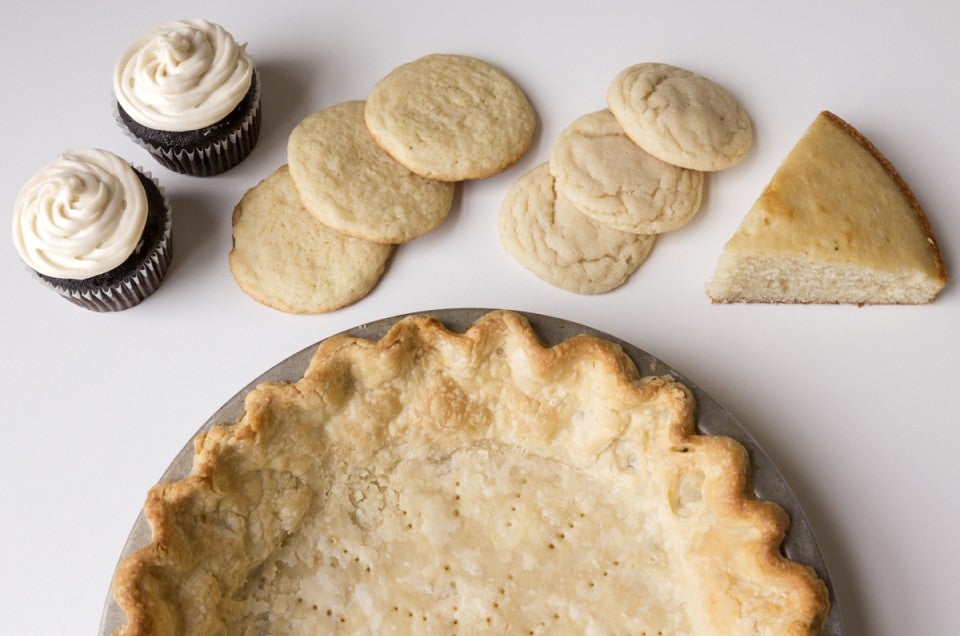


Vegetable shortening can be a mysterious ingredient. I’d never plunged my spatula into the cloud-like stuff until a few months ago when I was baking in the test kitchen. Growing up, I always reached for a trusty kitchen staple instead: butter. But recently as I whipped up batches of cookies and a plethora of pies, I began to wonder about the difference between using shortening vs. butter in baking.
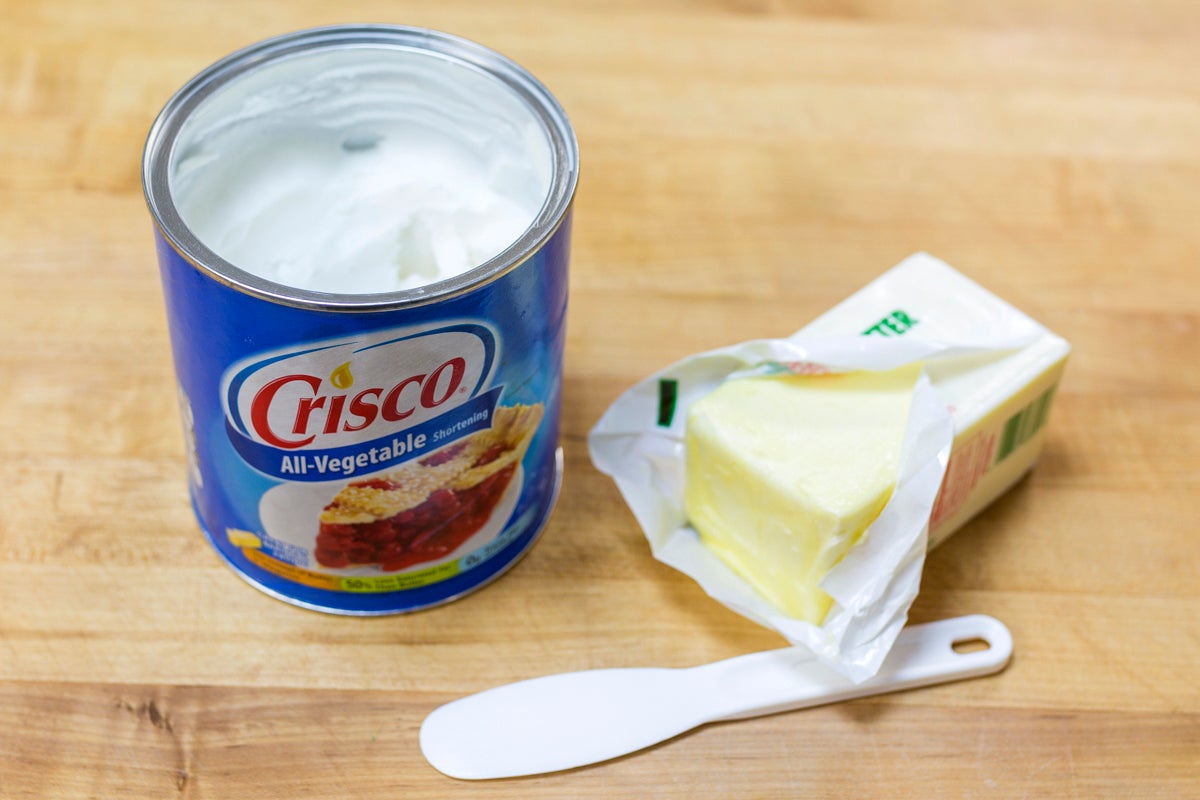
Butter is a familiar ingredient. We know it comes from cows, and it’s delicious on toast. It’s made by churning fresh or fermented cream, and then separating solids from the liquid (which is then sold as buttermilk). It’s about 80% butterfat, plus 18% water and 1% to 2% milk solids.
Shortening on the other hand is a bit more complicated, starting with the name. “Shortening” actually refers to all fats and oils, but what we’re talking about here is hydrogenated vegetable oil shortening (such as Crisco).
This kind of shortening is typically made from soybean, cottonseed, or palm oil. It goes through a special process called hydrogenation so it remains semi-solid at room temperature. It’s 100% fat, unlike butter.
Even though these ingredients are clearly different, shortening and butter are often used interchangeably in recipes with acceptable results. But if you’re looking to make the very best baked goods, like so many of us King Arthur Flour bakers, which should you use?
Shortening vs. butter: the ingredient to reach for depends on what you’re baking.
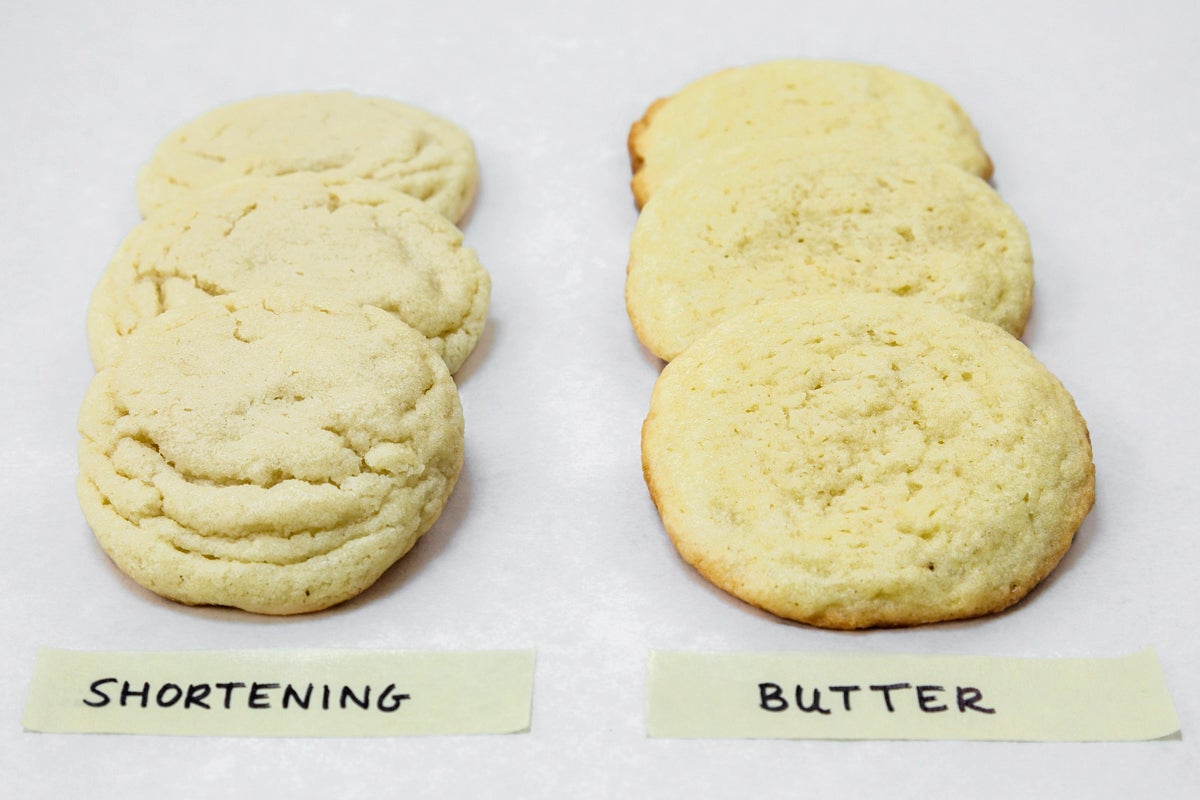
If you’ve ever had a tray of cookies morph into one huge mess in the oven, it’s time to listen up.
Cookies made with butter, especially high-sugar recipes, tend to be flatter and crispier than cookies made with shortening. Because of butter’s low melting point, the dough tends to spread during baking before the structure sets.
To see just how different the spread would be, I baked two batches of our Self-Rising Crunchy Sugar Cookies (one made with all butter, one with all shortening), for another shortening vs. butter in baking comparison.
As predicted, the cookies made with shortening spread less and remained slightly rounded, thanks to the higher melting point. These cookies had what’s called a “short” texture. You might recognize this slightly sandy, crumbly feel as the characteristic texture of shortbread. (Yum.)
If you’re having problems with cookies spreading, you might try replacing some of the butter with shortening. Keep in mind this is just one reason why cookies spread; there’s a multitude of factors you can adjust if you’re committed to using butter for its rich flavor.
A quick fix? Consider chilling your butter-based cookie dough to help control spread (and bonus, you'll also experience a wonderful depth of flavor, too!).
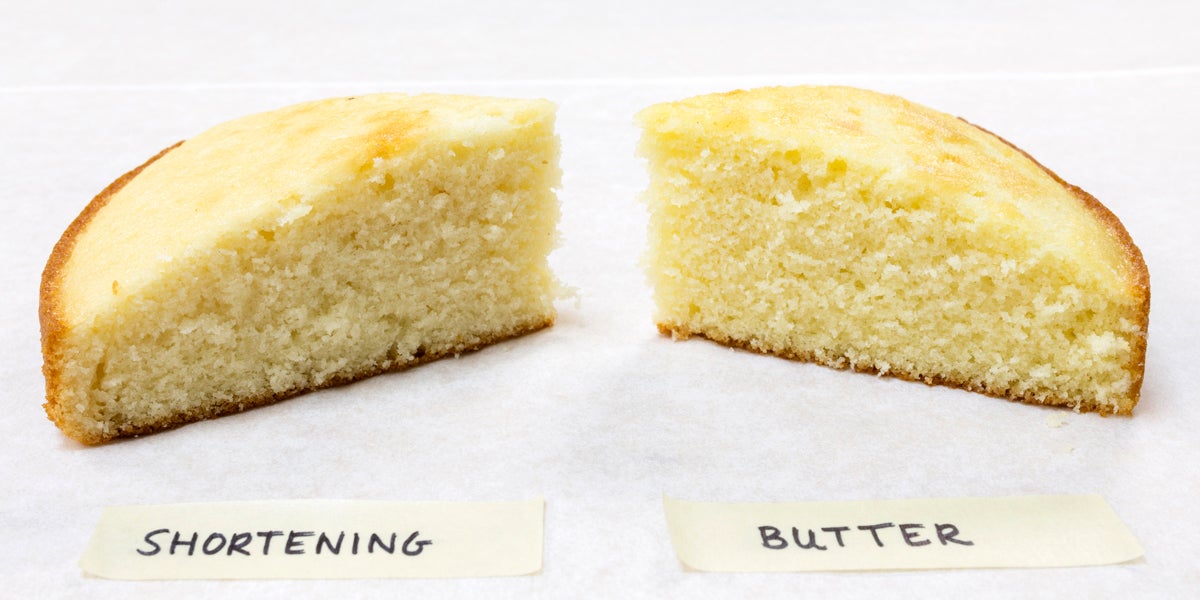
What about cake? We know shortening adds tenderness since it's 100% fat, so some of us curious bakers started wondering what would happen if it was used to make cake.
Would the cake rise in the oven? Or would it collapse? Would it have a large crumb? We needed to find out!
Our Back-to-Basics Yellow Cake was the recipe of choice for this experiment — it’s a standard butter cake that uses a cup of fat. One cake was baked using all butter, while shortening was the fat of choice in the other.
The result? The difference between shortening vs. butter was underwhelming when judged by appearance alone. The height was comparable, as were the color and crumb.
The texture of the cake made with shortening, however was quite pleasant — tender, lofty, and light. When shortening is creamed with sugar, it traps air molecules, which helps to leaven cakes and make them tender. A fork slides through a slice of shortening-based cake easier than one made with butter.
You might be thinking, then why don’t more cake recipes call for shortening?
Flavor. What’s a cake if it doesn’t taste great? The rich creaminess of a classic butter cake is hard to replace.
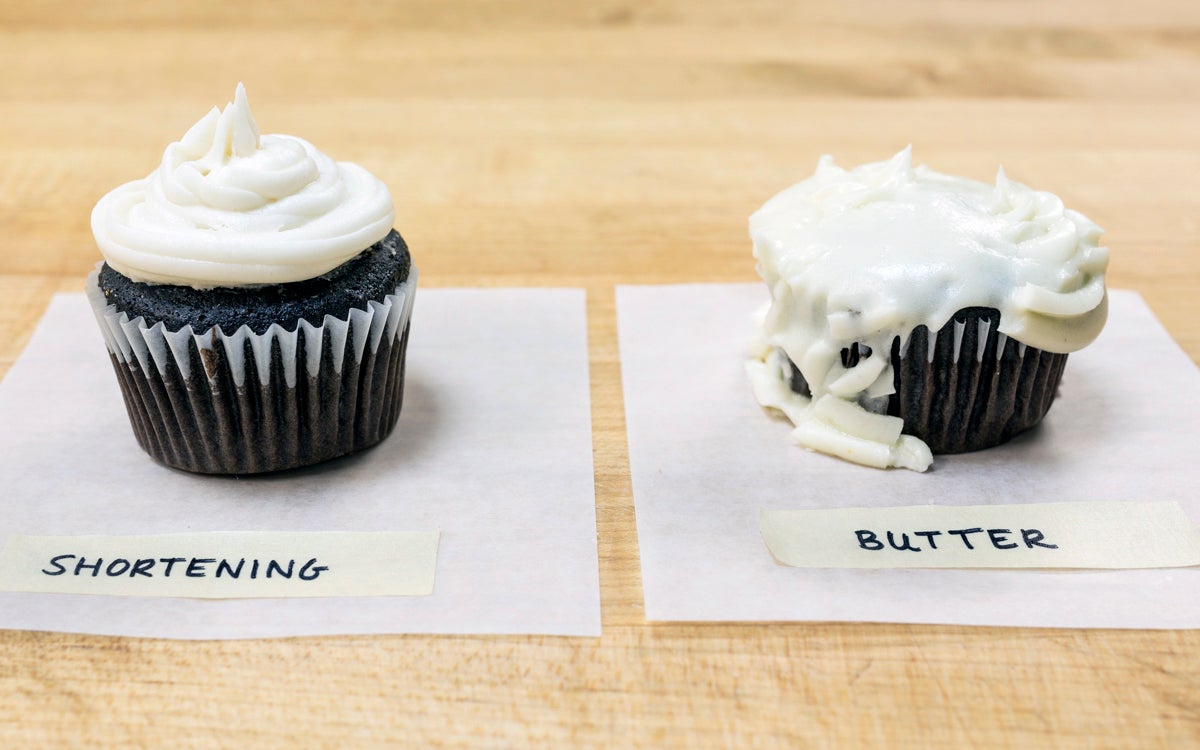
It might seem like butter would be the obvious choice when making buttercream frosting, and if you’re going for best flavor, it’s a worthy option.
But shortening might have its place in your frosting recipe too. Because it’s 100% fat, it helps make buttercream more stable than an all-butter buttercream, which can begin to separate at warm temperatures.
It’s a sad sight to see a beautifully piped cake wilt in the sun as the baker stands by watching helplessly. We replicated hot, summery conditions (when so many of us cake bakers are called upon) by putting frosted cupcakes in a low oven for 10 minutes.
The results were drastic: the all-butter buttercream melted and spread down the sides of the cupcake, while the buttercream made with shortening held its shape.
But you trade stability for flavor.
So if heat isn't a problem, you might want to stick with a Classic Buttercream recipe.
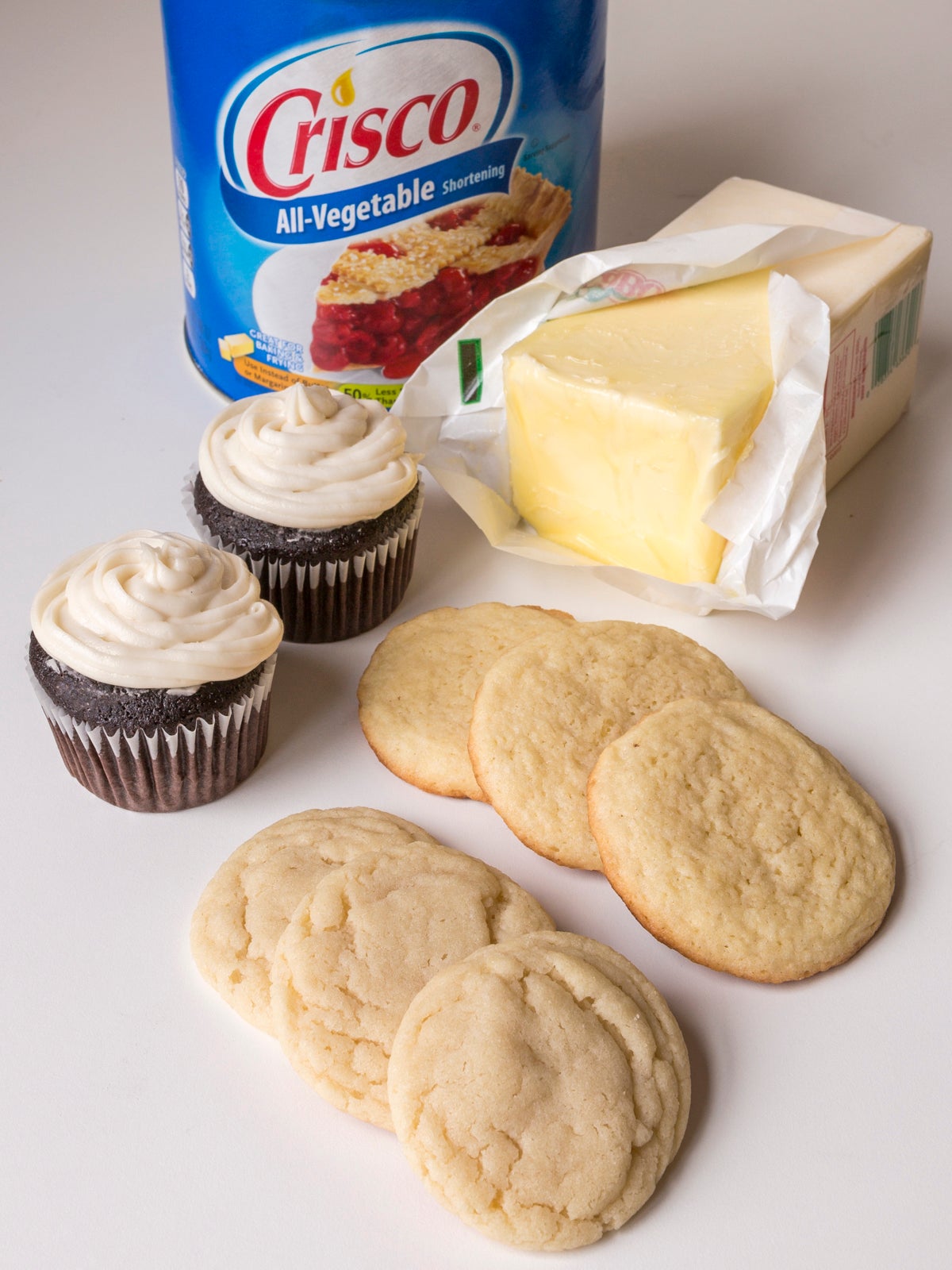
It’s clear that both shortening and butter have their virtues and vices. They can both be used to make delicious, tender baked goods that are full of flavor and richness.
There might be certain cases when it just makes more sense to use butter, like in a classic cake perhaps. There are other times when a can of Crisco is now the thing I reach for: when making pie crust, frosting, and even sandwich cookie filling.
The virtue of butter vs. shortening is a passionate topic for many bakers, and we explore both here for their distinctive baking qualities. Each baker brings unique needs and perspectives to the table, and it’s our sincere hope everyone will choose ingredients that best embrace their personal goals.
Interested in more baking science? Check out our post on cookie chemistry, covering how to attain the perfect bendy/chewy/crisp/crunchy cookie texture you want!
A special thanks to fellow employee-owner Nic Doak for taking the photos for this blog.

